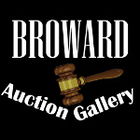













Item Details
Description
ARTIST: George Morton Prout (Indiana, Florida, 1913 - 2016)
NAME: Illustration - Mother Mary Joseph 1882-1955
YEAR: 1970s
MEDIUM: oil on board
CONDITION: Very good. No visible inpaint under UV light.
SIGHT SIZE: 7 x 9 inches / 17 x 22 cm
BOARD SIZE: 10 x 12 inches / 25 x 30 cm
SIGNATURE: unsigned
CATEGORY: antique vintage painting
AD: ART CONSIGNMENTS WANTED. CONTACT US
USEFUL INFO ABOUT ART IS ON OUR SOCIAL MEDIA:



SKU#: 117847
US Shipping $42 + insurance.
BIOGRAPHY:
Born on September 1st, 1913 in St. Francisville, Illinois, a small river town on the west bank of the Wabash River, George Morton Prout was the son of John Prout and Edna Bullington Prout, straight-laced, religious Protestant parents with Midwestern prairie pioneer roots, restlessly moving during his youth from southern Illinois to North Dakota, then to Alabama, then to Florida, then to Indiana, where they finally settled. Both of George's parents were socially conservative but expressed themselves artistically his father enjoying writing, calligraphy, drawing, and singing, and his mother studying music, playing piano, presenting oral book reviews in the community (before radio days), and practicing photography, even with her own darkroom for developing her photos of people in everyday life scenes in southern Indiana in the early 1900's. George's younger brother Paul was also a musician. Appreciation of literature was highly valued; so were the ideals of freedom of expression. George learned from family example to live by principles; he knew that his Grandfather Prout had gone into north Texas shortly after the Civil War to establish a school to educate newly freed slaves, only to be chased back to the North by the KKK. George's own father, the editor of the local St. Francisville newspaper, advocated locally unpopular views when he editorialized for the rights of local Roman Catholic children and children of color to attend the same public schools, alongside the Protestant white children, without discrimination in the early 1920's. George's family then faced threats from the local KKK and, after being awakened by a cross burning on their lawn, had to leave St. Francisville, while he and his brother were still children just old enough to remember the intimidating ordeal of living in a closed-minded community still mired in 19th century ways. And remember he did, advocating for civil rights and equality throughout his life. The moves to different parts of the country opened George's eyes to the big diverse world beyond the small Midwestern prairie town views. While living in nascent Miami in the 1920's, he experienced colorful and diverse people, experiences, and scenery that inspired his already active imagination. The devastating hurricane of 1926, along with a faltering economy, forced a move back to the North this time to Indianapolis, Indiana, where George attended Arsenal Technical High School with many classes of various studies available including his beloved art classes. In the cosmopolitan city of Indianapolis, George was inspired by the cultural opportunities previously unavailable to him, such as theaters, concerts, and most notably an art museum. Like a thirsty traveler in the desert upon reaching an oasis, he drank in the cultural possibilities. Upon his high school graduation in 1931, he strove to attend art school, although it was no easy feat during the Great Depression with little opportunity for employment to earn money for tuition and materials. Later, his appreciation for relationships and experiences in life, as well as for life itself, beyond what money could buy, would show through even in his art. Although he had saved throughout his childhood by delivering newspapers and doing other odd jobs to have enough tuition for an art education after high school, the local bank where he had deposited all his savings closed down in the early days of the Great Depression, wiping out his hard-earned savings. Nevertheless, undaunted by Depression-era hardships and dedicated to establishing his career in art, he worked odd jobs while pursuing studies at the John Herron Art Institute, as well as the Pennsylvania Academy of Fine Arts in Philadelphia for a year. After completing his studies at Herron, he received a Milliken Scholarship to continue art studies abroad, so he went to France in 1939; when Germany invaded France in 1940, he had to hurriedly flee Paris for Le Havre with less than a day's notice (no money and a bicycle as sole transport), as Americans there became overnight war refugees boarding freighters and cargo ships by any means possible to escape. With only his bicycle and a few art supplies and without money, his art served as his currency. He sketched and painted small portraits to exchange with others aboard the freighter in order to barter for food and other necessities until reaching the United States. He spent the remainder of his Milliken Scholarship abroad in Mexico, learning Spanish and studying the arts and crafts of the many cultures there from the summer of 1940 until the United States entered World War II in 1941. He returned to sign up for military service, but the Army doctors at the intake physical examination found he had a serious illness. After a year, he had recovered his health but was still deemed 4-F (i.e., medically ineligible for military service,) so during the War he worked in a war materiel plant in Indiana, rendering the engineers designs for materiel manufacture. During his art studies at John Herron, George had met a fellow art student, Fay Davis, and they enjoyed their common interests in art and design, as well as similar outlooks on life. She continued her studies at Herron and graduated while George was abroad. When he had recovered from his illness, they married. In the 1930's, she had painted murals in various Midwestern post offices and then made maps for the Army Map Service during the War. They married in 1943 and lived in Columbus, Indiana, until 1959. From 1945 until 1951, George Prout's graphic work consisted mostly of magazine illustrations, frontispieces, book covers, and advertising. From 1951 to 1977, Brown and Bigelow contracted Prout to illustrate their two religious art calendar series (Catholic series and Protestant series.) This became a lucrative, full-time job for many years and allowed the freedom to move back to Florida, a sunny, colorful place to which he had always wanted to return. Through his associations with other artists who painted for Brown and Bigelow (Gil Elvgren, Fred Sweney, and others,) Prout learned of a sort of art colony community blossoming in Sarasota, Florida, where there were cultural activities, galleries, an art museum and an art school, as well as an openness to the arts. So he and his wife decided to build a home there, complete with art studio, then moved there with their children in 1959. With his calendar work requiring that he produce mostly oil paintings, for creative fun Prout started to make serigraph prints on his own time. Many of his silk screen prints had whimsical topics (beach scenes, Florida sunshine, light-hearted works.) In the late 1960's to early 1970's, he made numerous serigraph prints. Galleries in Baltimore and NYC handled his prints, and The Original Print Collectors Group in NY commissioned both his paintings and print work. One series focused on horse races. The New York Metropolitan Museum of Fine Arts and Prout had an arrangement for a couple of those print editions. When their children had grown and set out on their own, George and Fay felt free to travel to see the art museums of the world. In the early 1960's, they had visited the numerous major art museums of the United States, Canada, and Mexico several times over and decided to make a grand tour of Europe and see all the art museums possible, along with the caves of Lascaux and Alta Mira, which they did in 1966. They were so inspired, they subsequently returned to Greece to see more of the ancient structures, sculptures, and pottery there. After those travels in Europe, Prout began the arduous challenge of sculpting the human figure in marble, which he continued occasionally between 1973 and 1989. In the late 1970's, Prout began etching in earnest. He had seen and collected etchings, printed by an old school master printer trained in Munich, by the name of Otto Karsch. He sought out Karsch as his mentor in etching technique and printing in order to get the desired outcomes in his etchings, with Karsch giving Prout valuable feedback and instruction as to technique and results in etching. Prout used his newly mastered medium to produce numerous etchings featuring mostly equine subjects a series on rodeos, and several on racing horses. In later years, he continued this as a favorite medium to do non-commercially inspired prints more as expressions of his personal musings into the 1990's. Their travels in those and subsequent years took them as far as Australia, New Zealand, Central America, and Africa. While on an African photo safari trip (not game hunting) in 1987, Prout became inspired to do a series of wildlife paintings, as well as etchings, of the wild animals that had thrilled them so much. Most sold as a result of gallery showings. He continued to make paintings and etchings portraying African wildlife into the 1990's, with his final gallery exhibition at age 92. Undaunted by age, George worked every day, standing for hours on the concrete floor of his studio while painting at his easel or etching, inking, and printing at his press. His subject matter in those later years was mostly about the joys, trials, and tribulations in life, of humanity in general. He saw and expressed in his subjective art (especially in his later work) the humorous and the satirical, the trivial and the profound, the happiness and the tragedy in people's lives and in the whole of mankind throughout the ages. In his subjective work, especially in his later years, atavism appears as a way to show what he saw as some enduring qualities of mankind's experiences. His wife Fay dedicated herself to their lives being focused around art, family, and altruistic efforts involving George's artistic talents. Together they appreciated the greatest art of the world and enjoyed each other's artwork, as well. When Fay became ill in the 1990's, George lessened his prodigious output, slowing down and sight failing but still at his easel doing portraits of all in his family every day, until March of 2011, when he suffered a disabling stroke at age 97. He lived on, past his 103rd birthday, continuing in his last five years to enjoy looking at art and discussing it with family and friends. His wife, his art world friends like Howard Munce, Claire Fry, and Otto Karsch, among others, and fellow activists for civil rights and humanitarian efforts like Tom Watson, and others dear to him had gone before he did, but he had a full life with challenges, insights, opportunities, rewards, and productivity in his career of art, appreciating art even into his final days. He died in 2016, in Bradenton, Florida. Although George Prout has left this world, his artistic spirit continues to live in private collections around the world.
NAME: Illustration - Mother Mary Joseph 1882-1955
YEAR: 1970s
MEDIUM: oil on board
CONDITION: Very good. No visible inpaint under UV light.
SIGHT SIZE: 7 x 9 inches / 17 x 22 cm
BOARD SIZE: 10 x 12 inches / 25 x 30 cm
SIGNATURE: unsigned
CATEGORY: antique vintage painting
AD: ART CONSIGNMENTS WANTED. CONTACT US
USEFUL INFO ABOUT ART IS ON OUR SOCIAL MEDIA:
SKU#: 117847
US Shipping $42 + insurance.
BIOGRAPHY:
Born on September 1st, 1913 in St. Francisville, Illinois, a small river town on the west bank of the Wabash River, George Morton Prout was the son of John Prout and Edna Bullington Prout, straight-laced, religious Protestant parents with Midwestern prairie pioneer roots, restlessly moving during his youth from southern Illinois to North Dakota, then to Alabama, then to Florida, then to Indiana, where they finally settled. Both of George's parents were socially conservative but expressed themselves artistically his father enjoying writing, calligraphy, drawing, and singing, and his mother studying music, playing piano, presenting oral book reviews in the community (before radio days), and practicing photography, even with her own darkroom for developing her photos of people in everyday life scenes in southern Indiana in the early 1900's. George's younger brother Paul was also a musician. Appreciation of literature was highly valued; so were the ideals of freedom of expression. George learned from family example to live by principles; he knew that his Grandfather Prout had gone into north Texas shortly after the Civil War to establish a school to educate newly freed slaves, only to be chased back to the North by the KKK. George's own father, the editor of the local St. Francisville newspaper, advocated locally unpopular views when he editorialized for the rights of local Roman Catholic children and children of color to attend the same public schools, alongside the Protestant white children, without discrimination in the early 1920's. George's family then faced threats from the local KKK and, after being awakened by a cross burning on their lawn, had to leave St. Francisville, while he and his brother were still children just old enough to remember the intimidating ordeal of living in a closed-minded community still mired in 19th century ways. And remember he did, advocating for civil rights and equality throughout his life. The moves to different parts of the country opened George's eyes to the big diverse world beyond the small Midwestern prairie town views. While living in nascent Miami in the 1920's, he experienced colorful and diverse people, experiences, and scenery that inspired his already active imagination. The devastating hurricane of 1926, along with a faltering economy, forced a move back to the North this time to Indianapolis, Indiana, where George attended Arsenal Technical High School with many classes of various studies available including his beloved art classes. In the cosmopolitan city of Indianapolis, George was inspired by the cultural opportunities previously unavailable to him, such as theaters, concerts, and most notably an art museum. Like a thirsty traveler in the desert upon reaching an oasis, he drank in the cultural possibilities. Upon his high school graduation in 1931, he strove to attend art school, although it was no easy feat during the Great Depression with little opportunity for employment to earn money for tuition and materials. Later, his appreciation for relationships and experiences in life, as well as for life itself, beyond what money could buy, would show through even in his art. Although he had saved throughout his childhood by delivering newspapers and doing other odd jobs to have enough tuition for an art education after high school, the local bank where he had deposited all his savings closed down in the early days of the Great Depression, wiping out his hard-earned savings. Nevertheless, undaunted by Depression-era hardships and dedicated to establishing his career in art, he worked odd jobs while pursuing studies at the John Herron Art Institute, as well as the Pennsylvania Academy of Fine Arts in Philadelphia for a year. After completing his studies at Herron, he received a Milliken Scholarship to continue art studies abroad, so he went to France in 1939; when Germany invaded France in 1940, he had to hurriedly flee Paris for Le Havre with less than a day's notice (no money and a bicycle as sole transport), as Americans there became overnight war refugees boarding freighters and cargo ships by any means possible to escape. With only his bicycle and a few art supplies and without money, his art served as his currency. He sketched and painted small portraits to exchange with others aboard the freighter in order to barter for food and other necessities until reaching the United States. He spent the remainder of his Milliken Scholarship abroad in Mexico, learning Spanish and studying the arts and crafts of the many cultures there from the summer of 1940 until the United States entered World War II in 1941. He returned to sign up for military service, but the Army doctors at the intake physical examination found he had a serious illness. After a year, he had recovered his health but was still deemed 4-F (i.e., medically ineligible for military service,) so during the War he worked in a war materiel plant in Indiana, rendering the engineers designs for materiel manufacture. During his art studies at John Herron, George had met a fellow art student, Fay Davis, and they enjoyed their common interests in art and design, as well as similar outlooks on life. She continued her studies at Herron and graduated while George was abroad. When he had recovered from his illness, they married. In the 1930's, she had painted murals in various Midwestern post offices and then made maps for the Army Map Service during the War. They married in 1943 and lived in Columbus, Indiana, until 1959. From 1945 until 1951, George Prout's graphic work consisted mostly of magazine illustrations, frontispieces, book covers, and advertising. From 1951 to 1977, Brown and Bigelow contracted Prout to illustrate their two religious art calendar series (Catholic series and Protestant series.) This became a lucrative, full-time job for many years and allowed the freedom to move back to Florida, a sunny, colorful place to which he had always wanted to return. Through his associations with other artists who painted for Brown and Bigelow (Gil Elvgren, Fred Sweney, and others,) Prout learned of a sort of art colony community blossoming in Sarasota, Florida, where there were cultural activities, galleries, an art museum and an art school, as well as an openness to the arts. So he and his wife decided to build a home there, complete with art studio, then moved there with their children in 1959. With his calendar work requiring that he produce mostly oil paintings, for creative fun Prout started to make serigraph prints on his own time. Many of his silk screen prints had whimsical topics (beach scenes, Florida sunshine, light-hearted works.) In the late 1960's to early 1970's, he made numerous serigraph prints. Galleries in Baltimore and NYC handled his prints, and The Original Print Collectors Group in NY commissioned both his paintings and print work. One series focused on horse races. The New York Metropolitan Museum of Fine Arts and Prout had an arrangement for a couple of those print editions. When their children had grown and set out on their own, George and Fay felt free to travel to see the art museums of the world. In the early 1960's, they had visited the numerous major art museums of the United States, Canada, and Mexico several times over and decided to make a grand tour of Europe and see all the art museums possible, along with the caves of Lascaux and Alta Mira, which they did in 1966. They were so inspired, they subsequently returned to Greece to see more of the ancient structures, sculptures, and pottery there. After those travels in Europe, Prout began the arduous challenge of sculpting the human figure in marble, which he continued occasionally between 1973 and 1989. In the late 1970's, Prout began etching in earnest. He had seen and collected etchings, printed by an old school master printer trained in Munich, by the name of Otto Karsch. He sought out Karsch as his mentor in etching technique and printing in order to get the desired outcomes in his etchings, with Karsch giving Prout valuable feedback and instruction as to technique and results in etching. Prout used his newly mastered medium to produce numerous etchings featuring mostly equine subjects a series on rodeos, and several on racing horses. In later years, he continued this as a favorite medium to do non-commercially inspired prints more as expressions of his personal musings into the 1990's. Their travels in those and subsequent years took them as far as Australia, New Zealand, Central America, and Africa. While on an African photo safari trip (not game hunting) in 1987, Prout became inspired to do a series of wildlife paintings, as well as etchings, of the wild animals that had thrilled them so much. Most sold as a result of gallery showings. He continued to make paintings and etchings portraying African wildlife into the 1990's, with his final gallery exhibition at age 92. Undaunted by age, George worked every day, standing for hours on the concrete floor of his studio while painting at his easel or etching, inking, and printing at his press. His subject matter in those later years was mostly about the joys, trials, and tribulations in life, of humanity in general. He saw and expressed in his subjective art (especially in his later work) the humorous and the satirical, the trivial and the profound, the happiness and the tragedy in people's lives and in the whole of mankind throughout the ages. In his subjective work, especially in his later years, atavism appears as a way to show what he saw as some enduring qualities of mankind's experiences. His wife Fay dedicated herself to their lives being focused around art, family, and altruistic efforts involving George's artistic talents. Together they appreciated the greatest art of the world and enjoyed each other's artwork, as well. When Fay became ill in the 1990's, George lessened his prodigious output, slowing down and sight failing but still at his easel doing portraits of all in his family every day, until March of 2011, when he suffered a disabling stroke at age 97. He lived on, past his 103rd birthday, continuing in his last five years to enjoy looking at art and discussing it with family and friends. His wife, his art world friends like Howard Munce, Claire Fry, and Otto Karsch, among others, and fellow activists for civil rights and humanitarian efforts like Tom Watson, and others dear to him had gone before he did, but he had a full life with challenges, insights, opportunities, rewards, and productivity in his career of art, appreciating art even into his final days. He died in 2016, in Bradenton, Florida. Although George Prout has left this world, his artistic spirit continues to live in private collections around the world.
Buyer's Premium
- 25%
George Morton Prout (IN,FL,1913-2016) oil painting
Estimate $260 - $320
Starting Price
$10
or 4 payments of $2.50 with 
20 bidders are watching this item.
Get approved to bid.
Shipping & Pickup Options
Item located in Dania Beach, FL, US$42 shipping in the US
Local Pickup Available
Payment
Accepts seamless payments through LiveAuctioneers

Auction Curated By

Director of Operations
Old Paintings LIQUIDATION (May 2024)
Dania Beach, FL, USA
Related Paintings
More Items in Indian Paintings
View MoreRecommended Art
View MoreTOP

























































































